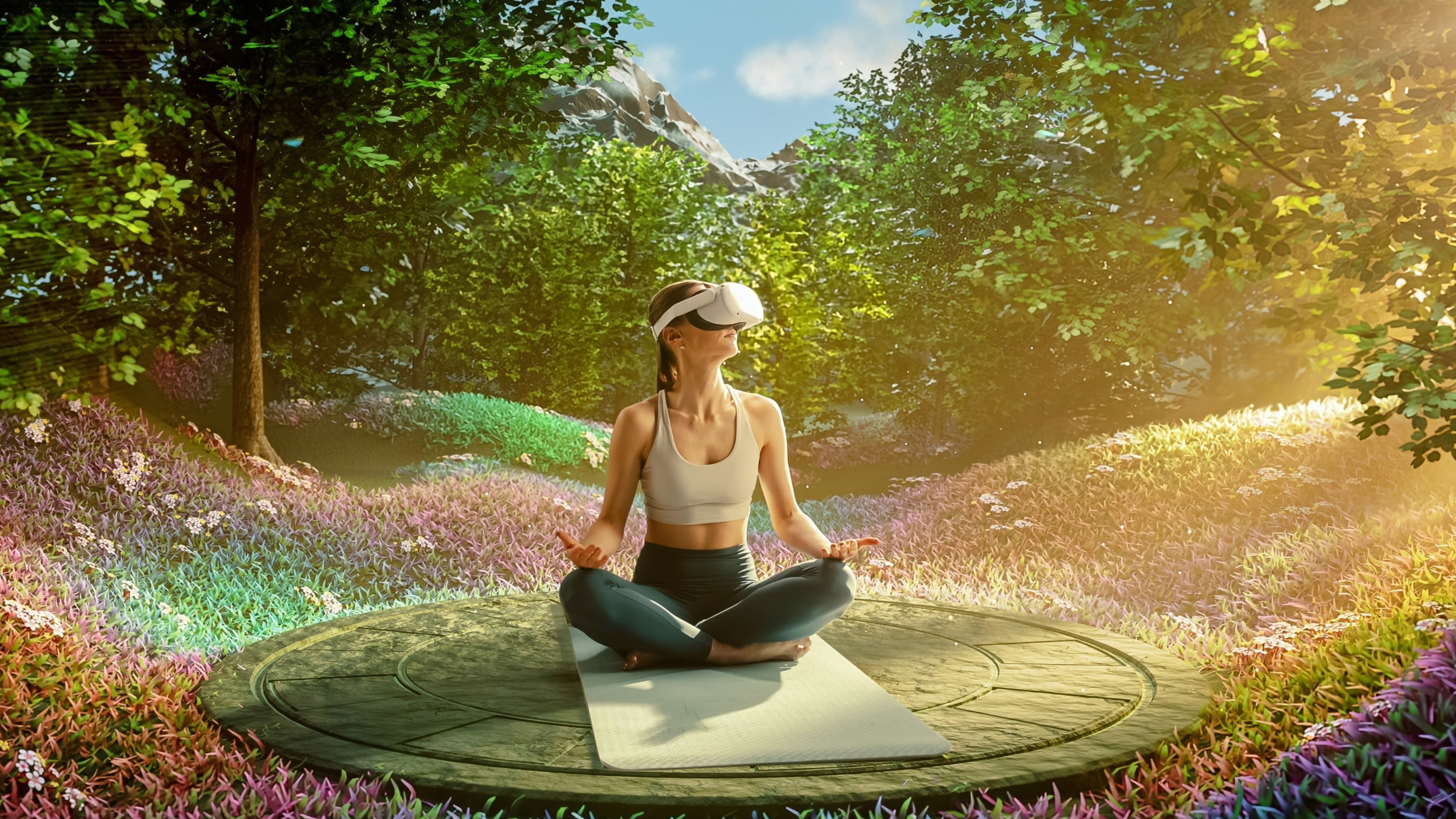People often feel stressed. Many don’t have time to go outside and relax. Cities keep growing, and virtual access to natural spaces feels more common while real ones feel far away.
In Japan, people use forest bathing to reduce stress. They call it Shinrin Yoku. It simply means spending quiet time in a forest. No phones, no distractions – just nature.
Researchers wanted to test something different. Can forest bathing work through a screen? Can people feel calmer by using virtual reality instead of going outside? They set up a study to find out.
Building a virtual forest
The researchers wanted to create a very realistic virtual forest experience. To do this, they filmed a 360° VR video in Sonnenberg nature reserve. This forest is the largest Douglas fir forest in Europe.
The team didn’t stop at just recording the scenery. They also captured all the natural sounds, like the wind blowing through the trees and birds singing.
On top of that, the researchers added the scent of Douglas fir essential oils to match what someone would actually smell in the forest. Participants in the study had different experiences based on the setup.
Some people got the full experience. They saw the forest video through VR headsets. At the same time, they heard the forest sounds and smelled the fir scent. This gave them a complete, rich, multisensory experience.
Other participants only experienced one sense at a time. Some only watched the forest video without sound or scent. Others only listened to the forest sounds, while some only smelled the scent without visuals or audio.
When the researchers tested hearing or scent alone, they kept the visuals simple and plain. They wanted to avoid flashy images or colors that could distract people. The goal was to focus only on one sense at a time for clear results.
Virtual forest improved mood
The researchers didn’t just let people jump into the virtual forest. First, they showed participants stressful images to raise their stress levels.
Once people felt stressed, they put on VR headsets. They then experienced one of four versions of the forest. Some got the full version. Others experienced just one sense.
People who used sight, sound, and scent together felt the biggest mood boost. They also felt more connected to nature.
The single-sense versions helped too but not as much. Some participants even showed slight improvements in working memory. This type of memory helps with short-term thinking and tasks.
Still, the researchers said more studies are needed. They explained that the results may not apply to everyone.
Study lead author Leonie Ascone is a researcher in the Neuronal Plasticity working group at the University Medical Center Hamburg-Eppendorf (UKE).
“We can already say that digital nature experiences can absolutely produce an emotional effect – even if they don’t replace actual nature,” noted Ascone.
VR nature in busy everyday places
Virtual nature won’t replace real forests, but it may help in other spaces. Simone Kühn, who led the research, is director of the Center for Environmental Neuroscience at the Max Planck Institute for Human Development
Kühn believes VR nature could help people in stressful environments. “Especially in places with limited access to nature – such as clinics, waiting areas or urban interiors – multisensory VR applications or targeted nature staging could support mental well-being.”
“The images, sounds and scents of nature offer previously underestimated potential for improving mood and mental performance in everyday situations.”
The research suggests that nature videos can even reduce pain in some cases. Now, Kühn sees more possibilities. Virtual nature could help people in hospitals, offices, and city spaces. It might make everyday life feel less tense.
Nature still works, even virtually
This study gives one simple message – nature affects people in a positive way. Even when nature appears on a screen, it still changes how people feel. The researchers saw clear improvements in mood and connection to nature, even though participants never left the room.
But it’s important to be realistic. Virtual forest bathing is not a perfect solution. It cannot fully replace being outdoors. Real forests offer more than just sights, sounds, and smells. There is fresh air, physical movement, and other factors that VR cannot copy.
Still, virtual forest bathing can help people who cannot easily go outside. People in hospitals, city apartments, or busy workplaces often have no access to real forests. For them, even a short virtual nature experience may reduce stress and lift their mood.
The study is published in the Journal of Environmental Psychology.
—–
Like what you read? Subscribe to our newsletter for engaging articles, exclusive content, and the latest updates.
Check us out on EarthSnap, a free app brought to you by Eric Ralls and Earth.com.
—–
